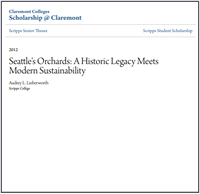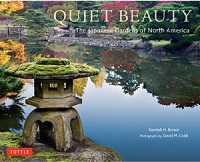 Dates: A Global History is another title in the Edible series from Reaktion Books. An unusual aspect of the fruit (technically a berry) of the date palm tree is that it may be harvested at three different stages of ripeness–the ultrasweet dates one usually finds for sale in groceries are at the final stage, when they have sun-dried on the tree and the skin has begun to wrinkle and darken. Dates have been used as a food staple for centuries. Once called ‘bread of the desert’ and ‘cake for the poor,’ dates are still considered of vital importance in combating world hunger.
Dates: A Global History is another title in the Edible series from Reaktion Books. An unusual aspect of the fruit (technically a berry) of the date palm tree is that it may be harvested at three different stages of ripeness–the ultrasweet dates one usually finds for sale in groceries are at the final stage, when they have sun-dried on the tree and the skin has begun to wrinkle and darken. Dates have been used as a food staple for centuries. Once called ‘bread of the desert’ and ‘cake for the poor,’ dates are still considered of vital importance in combating world hunger.
The date palm’s botanical name (Phoenix dactylifera) derives from the tree’s origins in Phoenicia (now Lebanon, Syria, and Israel), while the species name might refer back to the Semitic roots of the word for palm (dekel in Hebrew, diqla in Aramaic, etc.) or could refer to the finger-like (dactylos) shapes of clusters of fruit, or more: it’s shrouded in mystery and confusion, as with so many names. You will also learn of a connection to the firebird or phoenix of myth and legend, which built a nest of cassia twigs and frankincense in the top of a date palm.
Other aspects of the date palm:
- Once a full crown of leaves has developed, the trunk does not widen with age; there are no annual growth rings if one cuts a cross-section. Leaves which die off protect the trunk with their bases that remain attached. The tree’s roots are fibrous, and secondary roots grow out of the bottom of the trunk. Both a male and female tree are needed to produce fruit. Trees must be hand-pollinated in spring (this has been common knowledge since the days of Mesopotamian agriculture!).
- Even in the days of Pliny the Elder, there were numerous varieties of dates. The ones American consumers will probably recognize are medjool and deglet noor, but there are nightingale’s eggs (beidh il-bilbil), khalasa (quintessence), and even an Obama date named for our president.
- Although we mainly think of date palms for their edible uses, the hollowed trunks were made into aqueduct pipes for irrigation, and were used in building (the first mosque in Medina, built in about 630 C.E., was reportedly made of palm trunks, thatched with palm leaves, with prayer mats of woven leaves).
- Indio in Southern California is the date capital of the U.S., and holds an annual date festival.
The book ends with several tempting recipes (sweet ones such as a 13th-century recipe for date syrup, and a personal favorite: a filled cookie called ma’moul, as well as savory uses).
Like the other books in this series, this title includes footnotes, bibliography, and index.
Reviewed by Rebecca Alexander
 I’ve always wondered about the warty etrog (citron, or Citrus medica) used as part of the Jewish observance of Sukkot (etrog represents one of The Four Species mentioned in the Biblical description of this festival; the others are palm, myrtle, and willow): what purpose did the fruit serve beyond the ritual, and how was this odd-looking fruit related to lemon? The answers to these and many other citrus-related questions may be found in Toby Sonneman’s
I’ve always wondered about the warty etrog (citron, or Citrus medica) used as part of the Jewish observance of Sukkot (etrog represents one of The Four Species mentioned in the Biblical description of this festival; the others are palm, myrtle, and willow): what purpose did the fruit serve beyond the ritual, and how was this odd-looking fruit related to lemon? The answers to these and many other citrus-related questions may be found in Toby Sonneman’s  Part biography, part garden photo essay, and part ventriloquist’s act, Marta McDowell’s Beatrix Potter’s Gardening Life (Timber Press, 2013) provides a window into Potter’s world. If you have read her children’s books, you will have a lasting impression of the charming adventures of rabbits, hedgehogs, kittens, and ducks but you may not think of Beatrix Potter as a botanical illustrator. I was surprised to discover that the highly accomplished sketch of foxglove and periwinkle on page 27 was made when she was only ten. The best feature of this book is the gathering together of selected drawings and watercolors of plants, fungi, and landscapes. Potter’s natural history illustrations (particularly of mushrooms) are featured in Ambleside’s
Part biography, part garden photo essay, and part ventriloquist’s act, Marta McDowell’s Beatrix Potter’s Gardening Life (Timber Press, 2013) provides a window into Potter’s world. If you have read her children’s books, you will have a lasting impression of the charming adventures of rabbits, hedgehogs, kittens, and ducks but you may not think of Beatrix Potter as a botanical illustrator. I was surprised to discover that the highly accomplished sketch of foxglove and periwinkle on page 27 was made when she was only ten. The best feature of this book is the gathering together of selected drawings and watercolors of plants, fungi, and landscapes. Potter’s natural history illustrations (particularly of mushrooms) are featured in Ambleside’s  Audrey Lieberworth enjoyed an active, outdoor childhood in Seattle, but not until she left for Scripps College did she realize “…just how much the connections I made with these [Seattle] landscapes as a child had shaped the person I had become.” The result of this revelation is her senior thesis, “Seattle’s Orchards: A Historic Legacy Meets Modern Sustainability.”
Audrey Lieberworth enjoyed an active, outdoor childhood in Seattle, but not until she left for Scripps College did she realize “…just how much the connections I made with these [Seattle] landscapes as a child had shaped the person I had become.” The result of this revelation is her senior thesis, “Seattle’s Orchards: A Historic Legacy Meets Modern Sustainability.”



 An important contributor to our Pacific Northwest literature has been Steve Solomon, now with his 6th edition of “Growing Vegetables West of the Cascades.” Each edition reflects the author’s on-going learning in his craft, the major change in this edition concerns the cultivation of asparagus. He now advocates growing these from seed, rather than starting with root crowns.
An important contributor to our Pacific Northwest literature has been Steve Solomon, now with his 6th edition of “Growing Vegetables West of the Cascades.” Each edition reflects the author’s on-going learning in his craft, the major change in this edition concerns the cultivation of asparagus. He now advocates growing these from seed, rather than starting with root crowns.![[Wild Plants of Greater Seattle] cover](https://depts.washington.edu/hortlib/graphix/WildPlantsGreaterSeattle.jpg)